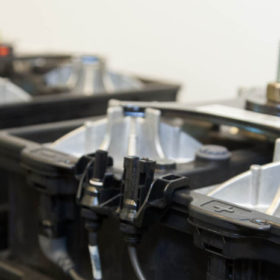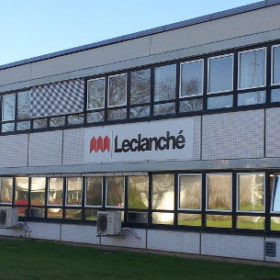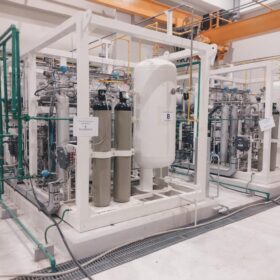CNG provider IGL and Tata Power team up for solar projects and EV charging
Tata Power will set up rooftop solar projects for Indraprastha Gas Limited (IGL) establishments. The two companies will also explore the feasibility of large-scale ‘group captive’ solar power projects for IGL’s own consumption, and commercial-scale charging and/or battery swapping stations for electric vehicles.
India gets access to Bolivia’s lithium for EV batteries
Bolivia will provide India with access to its lithium carbonate, and also facilitate joint ventures for lithium battery/cell production plants in India. The partnership will provide a major fillip to India’s ambitious e-mobility plans.
Gas utility GAIL and BHEL to jointly develop solar projects
The two state-owned units will jointly pursue commercial solar power projects through participation in tariff/viability gap funding (VGF) based competitive bidding.
Suzlon sells two solar arms to CLP India
Suzlon Energy sold to CLP Wind Farms its majority stakes in SE Solar and Gale Solarfarms for Rs 76.55 crore and Rs 22.54 crore, respectively. It had set up these subsidiaries, in partnership with CLP India, for a 100 MW solar project in Telangana and a 50 MW project in Maharashtra.
Amtronics pays initial license fee to use QMC’s quantum dot technology for thin-film solar cells
Amtronics CC has paid U.S. firm Quantum Materials Corp an initial $500,000 as part of an agreement securing the right to manufacture quantum dots and thin-film quantum dot solar cells based on QMC technology for commercial supply in India. Construction has already started on a manufacturing facility in Assam, which will produce solar cells via a continuous, rapid-feed, flexographic-based printing process.
Tata Chemicals signs MoU for ISRO’s lithium-ion cell technology
Under this MoU, Indian Space Research Organisation (ISRO) would transfer the technology to Tata Chemicals so that it may manufacture lithium-ion cells of varying capacity, size, energy density and power density—catering to a wide spectrum of power storage requirements.
ADB to invest $50 million in solar project developer Avaada
With the current equity investment, Avaada—which has secured power purchase agreements of about 1,700 MW—is well funded to exceed capacity of 2 GW.
SolarPower Europe and NSEFI sign MoU on solar cooperation
Brussels-based SolarPower Europe and the National Solar Energy Federation of India (NSEFI) have signed a Memorandum of Understanding (MoU) for cooperation on operation & maintenance (O&M), installation quality, digitalisation and storage.
Exide JV partner gets a big boost ahead of Li-ion battery operations in India
The revenues of Switzerland-based Leclanché have increased more than 2.5 times to exceed CHF 47 million in 2018 compared to CHF 18 million in 2017.
UK-India fund commits $200m to renewables developer Ayana
Fund backed by both governments commits $200 million to the developer, which was itself established by the U.K. government a year ago. Ayana – which boasts a 500 MW solar portfolio – recently enjoyed a $330 million cash boost from public-private joint venture EverSource Capital.














